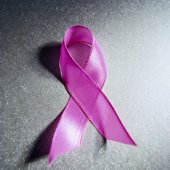
THURSDAY, May 3 (HealthDay News) — More than half of women in their 40s diagnosed with breast cancer after a routine mammogram had no family history of the disease, finds a new study that may add to the debate over the timing of breast cancer screening.
The researchers say their results point to the value of annual screening mammograms for women 40 to 49. But others remain unconvinced.
Family history usually means a first-degree relative with the disease (parent, sibling or child). Of those without family history who were found to have breast cancer, “64 percent of these women had invasive disease,” said researcher Dr. Stamatia Destounis, a radiologist at Elizabeth Wende Breast Care Center and a clinical associate professor at the University of Rochester in New York.
Destounis was to present her findings at the American Roentgen Ray Society annual meeting in Vancouver on Thursday.
This is one of numerous studies undertaken to determine the ideal age for women to begin screening mammograms and the appropriate intervals between screenings. In 2009, the U.S. Preventive Services Task Force (USPSTF) sparked controversy when it recommended screening mammograms every two years for women aged 50 to 74, but not younger.
The USPSTF advised women 40 to 49 at average risk of breast cancer to discuss the pros and cons with their doctors and then decide about the value of screening. That was because the task force found a small benefit for the younger women and moderate harm, such as false positive results.
However, the American Cancer Society and other organizations continue to recommend annual screening beginning at age 40.
Earlier this week, an analysis published in the Annals of Internal Medicine concluded that women in their 40s who have a family history of breast cancer or extremely dense breasts should consider getting a mammogram every two years. The researchers said that for those women the benefits of screening every two years outweigh the risks.
In the new study, Destounis and her colleagues evaluated records of all mammograms conducted at the imaging center from 2000 to 2010. They focused on 373 women in their 40s diagnosed with breast cancer after a routine mammogram. Of these, 228 — or 61 percent — had no family history of the disease. Seventeen were excluded because of a personal history of cancer or other high-risk status.
Of the 211 women remaining, nearly 64 percent had invasive disease, and 15 percent had cancer cells in their lymph nodes.
“This study reinforces the importance of screening mammography in the 40-to-49 age group with no family history as a risk factor,” Destounis concluded.
However, the chair of the USPSTF said the study does not prove that the cancers were detected because of the mammograms.
“The assumption is made that these women did better because invasive cancers were found by screening,” said Dr. Virginia Moyer, also a professor of pediatrics at Baylor College of Medicine in Houston. “The only way to know that is to randomize [women] to screening or not.” That would mean assigning one group of women to screening and another to no screening.
Those are the kinds of studies the task force looked at when producing the 2009 guidelines, Moyer said. The USPSTF found a small benefit for women in their 40s balanced by a moderate risk of harms, she said.
“Their data only shows they found invasive cancer, not that the women benefited directly from the mammogram,” Moyer added.
Data and conclusions of research presented at medical meetings should be considered preliminary until published in a peer-reviewed medical journal.
More information
To learn more about mammograms, visit the American Cancer Society.

